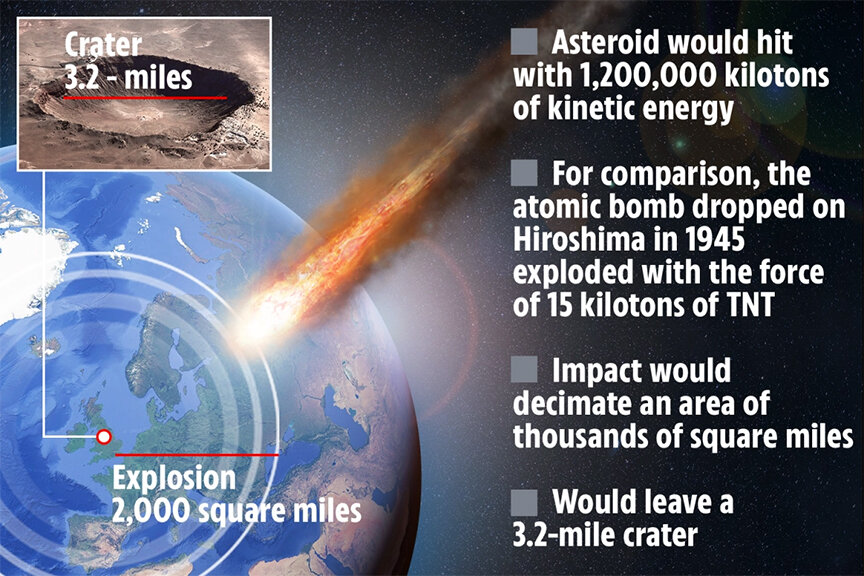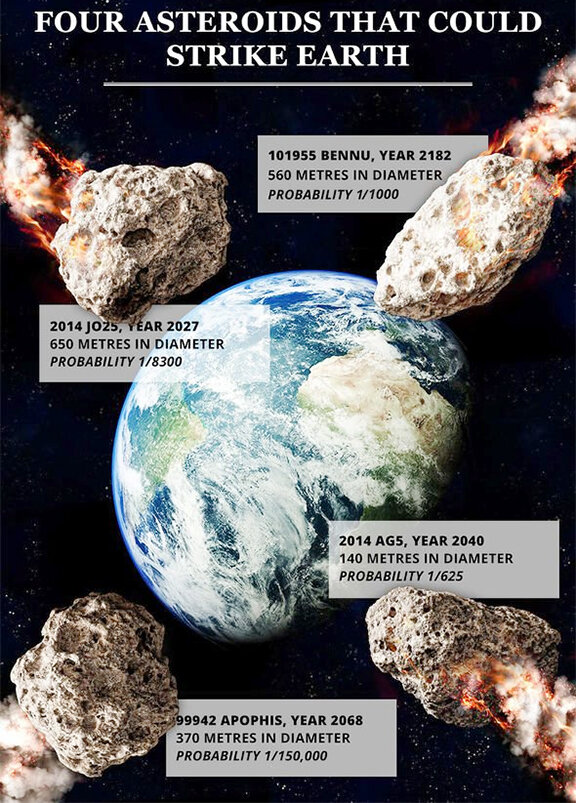Asteroid Apophis | 31 Mar 2021
Why in News
Recently, the National Aeronautics and Space Administration (NASA) has ruled out the possibility of the dreaded asteroid Apophis causing any damage to the Earth for the next 100 years.
Key Points
- Size:
- Apophis is a near-Earth asteroid with a relatively large size (about 335 meters wide).
- Name & Discovery:
- Named after the ancient Egyptian god of chaos and darkness, it was discovered in 2004, after which NASA had said that it was one of the asteroids that posed the greatest threat to Earth.
- Apophis was predicted to come threateningly close to us in the years 2029 and 2036, but NASA later ruled these events out.
- However, there were still fears about a possible collision in 2068.
- Named after the ancient Egyptian god of chaos and darkness, it was discovered in 2004, after which NASA had said that it was one of the asteroids that posed the greatest threat to Earth.
- Near Earth Flight:
- Recently, the asteroid flew past Earth on 5th March 2021, coming within 17 million km of our planet. During this approach, scientists used radar observations to study in detail the asteroid’s orbit around the sun.
- Impact if it Hits Earth:
Asteroids
- About:
- Asteroids are rocky objects that orbit the Sun, much smaller than planets.
- They are also called minor planets.
- According to NASA, 9,94,383 is the count of known asteroids, the remnants from the formation of the solar system over 4.6 billion years ago.
- Asteroids are rocky objects that orbit the Sun, much smaller than planets.
- Categorization: Asteroids are divided into three classes:
- First Group:
- Those found in the main asteroid belt between Mars and Jupiter, which is estimated to contain somewhere between 1.1-1.9 million asteroids.
- Second Group:
- It is that of trojans, which are asteroids that share an orbit with a larger planet. NASA reports the presence of Jupiter, Neptune and Mars trojans. In 2011, they reported an Earth trojan as well.
- Third Group:
- It is Near-Earth Asteroids (NEA), which have orbits that pass close by the Earth. Those that cross the Earth’s orbit are called Earth-crossers. More than 10,000 such asteroids are known, out of which over 1,400 are classified as Potentially Hazardous Asteroids (PHAs).
- NASA’s Center for Near-Earth Object Study (CNEOS) determines the times and distances of these objects, when their approach to the Earth is close, through the Asteroid Watch Widget.
- First Group:
Potentially Hazardous Asteroids
- It means that an asteroid has the potential to make threatening close approaches to the Earth.
- Specifically, all asteroids with a Minimum Orbit Intersection Distance (MOID) of 0.05 AU (which is about 7,480,000 Km) or less and an Absolute Magnitude (H) of 22.0 (about 150 mt in diameter) or less are considered PHAs.
- Minimum Orbit Intersection Distance is a method for calculating the minimum distance between two almost overlapping elliptical orbits.
- The Astronomical Unit (AU) is the distance between the Earth and the Sun and is roughly 150 million km.
- The absolute magnitude is a measure of the star's luminosity i.e. the total amount of energy radiated by the star every second.
- Apophis is categorised as a PHA.


